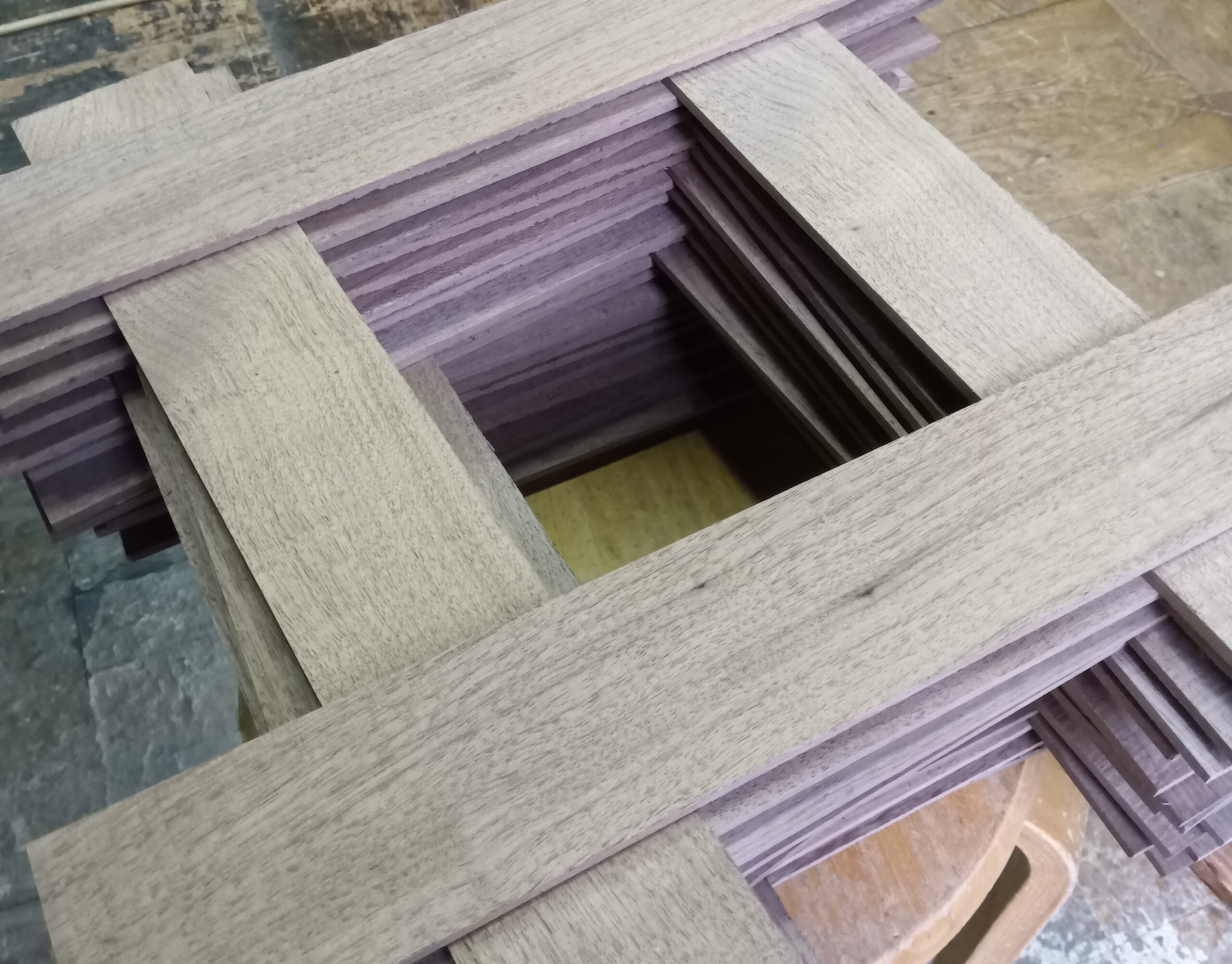22-Apr-2025
Today, I continued work on two types of boxes that I had put on hold recently: the 2.5-sun 5-steps box and the 3-sun 7-steps box. The next process for both is attaching the side panels, and I was finally able to prepare the necessary materials, so I can move forward now. However, I plan to let the walnut wood for the 3-sun box dry a bit more. As you can see in the photo, I’ve stacked the pieces in a crisscross pattern “igeta” to let the air flow through. Honestly, I’m not sure how much of a difference a few more days of drying will make, but I’d like to take a little extra time just in case.
Depending on the type of wood, some are more sensitive to environmental changes, while others are not as affected. For the 2.5-sun box, I’m using Nyatoh wood for the side panels. Compared to walnut, Nyatoh seems relatively stable and less affected by the environment—of course, assuming the wood is properly dried. So, I decided to let the walnut wood sit a bit longer and started working on attaching the Nyatoh side panels to the 2.5-sun box first.
Nyatoh, like many woods, can vary in texture depending on the part of the tree—some areas are softer, while others are harder. This time, I used a relatively soft part. In general, softer wood is more suitable for Japanese puzzle boxes. That said, since wood varies so much, I can’t always choose only the perfect parts. Harder sections are used in areas where it won’t affect the function. For example, in the case of Nyatoh, using slightly harder pieces for the side panels is no problem. However, for the sliding keys that I plan to attach to the Aruki panels tomorrow, I’ll try to use softer pieces with straight grain.
The walnut wood I’m using this time for the 3-sun box is relatively hard, but even within that, I try to select parts with straight grain and softer texture for the moving parts of the mechanism. There are many types of hard wood, but I feel that walnut is just about the hardest and grain that can still be used for Japanese puzzle boxes. Many panels in Japanese puzzle boxes are quite thin, so wood that is too coarse or too hard—with wide grain or low density—tends to shrink or warp over time, making it unsuitable. These types of wood are more sensitive to environmental changes.
That’s why, “Ideally”, Japanese puzzle boxes (himitsu-bako) should not only have yosegi sheets on the top and bottom but also on the side panels, instead of using solid wood. This helps ensure better stability and durability.
Today, I also worked on assembling the frames and fitting the Aruki panels for the 14-step Mame (1-sun) puzzle boxes. Since I’m making a large number this time, progress is a bit slow 😅 The Aruki panel fitting is still in progress. Rain is expected tonight, so I’m a little concerned about the humidity tomorrow. However, since the mini puzzle boxes are small, I don’t think the humidity will have a big impact on fitting the Aruki panels. I’m also planning to make the 18-step version of the mini puzzle box next, so today I prepared the marquetry panels for that as well. I’ll probably continue with these tasks tomorrow.



